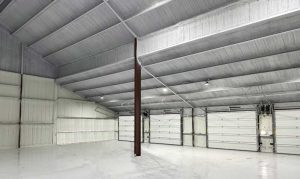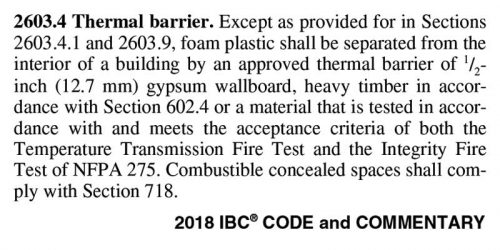
By Richard Barone
Over the past several decades, plastic has been increasingly used in the construction industry, and with more plastics in buildings, the International Building Code (IBC) has updated its requirements to address the flammability of these plastics.
Regarding the proliferation of plastics and composites, the thermal barrier section of the IBC (chapter 26, specifically) came into existence. However, “thermal barrier” is a term used specifically for the fire rating of a building element. It can be confused with terms such as “thermal insulation” or “thermal bridging,” both of which relate to the transfer of heat or cold through building materials. A thermal barrier, however, as defined by the IBC, is very specific to heat and fire.
The Underwriters Laboratories (UL) defines thermal barriers as “a material or product that prevents or delays the ignition of a flammable surface, such as foam plastic insulation or metal composite material, in the event of a fire.”1
The requirements for thermal barriers
The IBC and the International Residential Code (IRC) define approved thermal barriers (“15-minute thermal barriers”) as:
- 12.7-mm (0.5-in.) gypsum wallboards.
- 18.2-mm (0.71-in.) wood structural panel (IRC only).
- A material that is tested in accordance with, and meets, the acceptance criteria of both the temperature transmission fire test and the integrity fire test of NFPA 275.

According to the code, all plastics installed into the building envelope require thermal barrier material to be applied over them. IBC section 2603.4 defines thermal barrier, the various deviations and derivatives, and direct compliance approaches to allow plastics to be safely applied in the building envelope.
Addressing thermal barrier requirements
While the IBC defines three methods of permissible thermal barriers, the specific section of the code allows four different methods. These exist primarily due to the unavailability of all solutions and are allowed as deviations until technology catches up with the need for improved fire safety.




